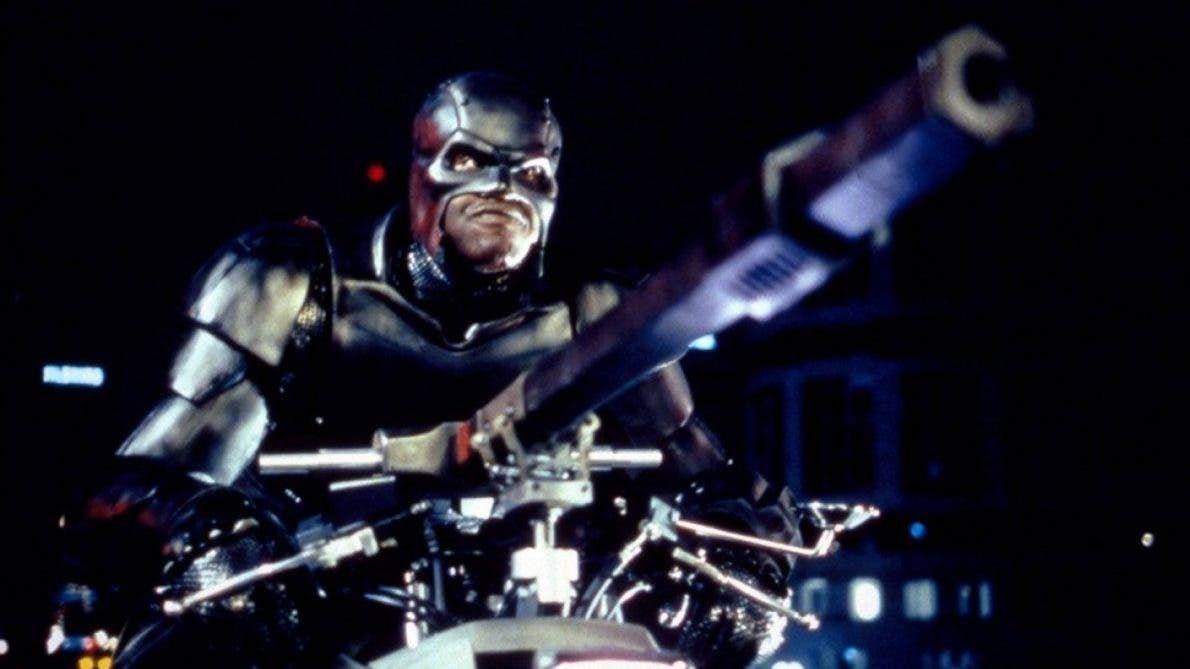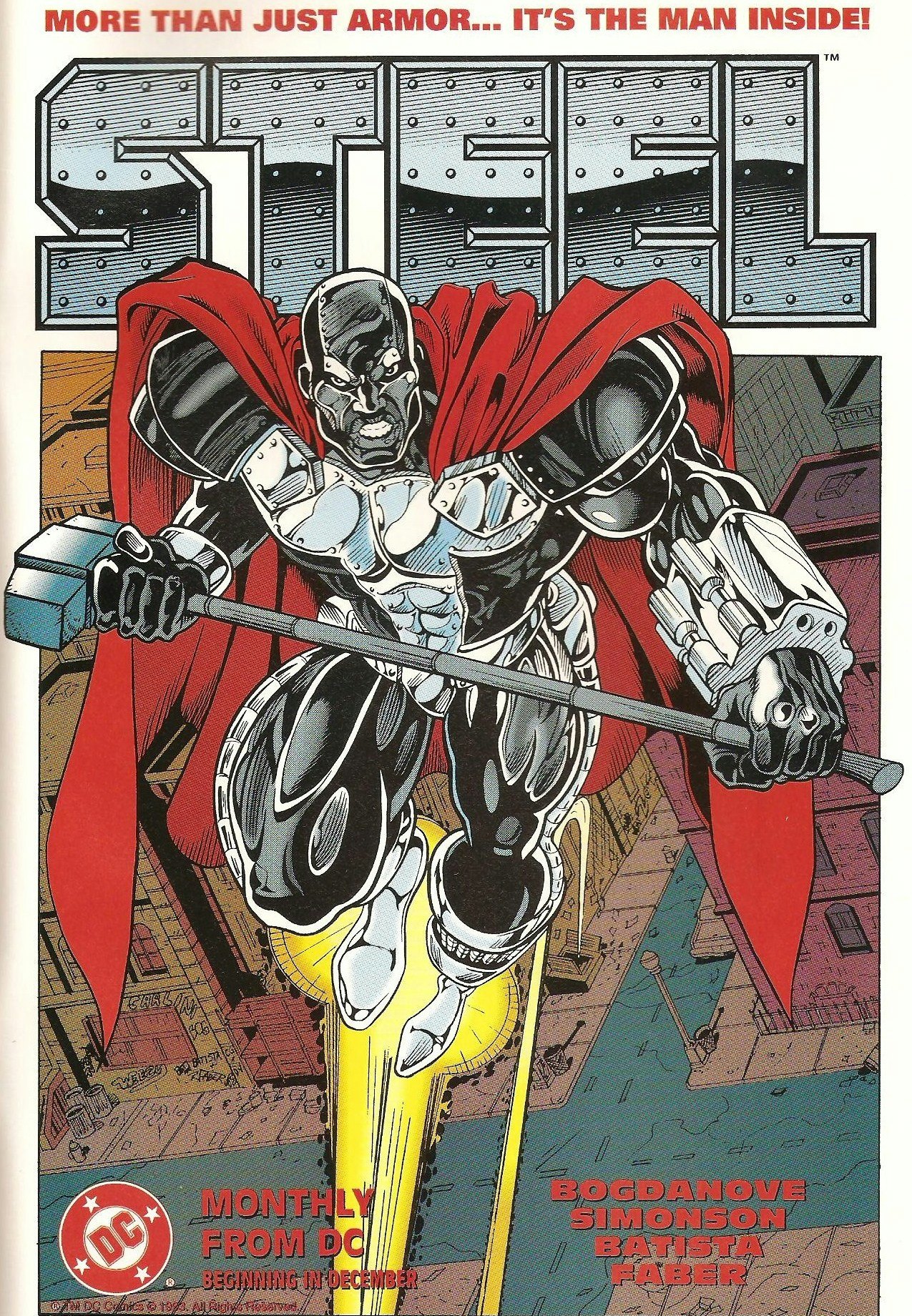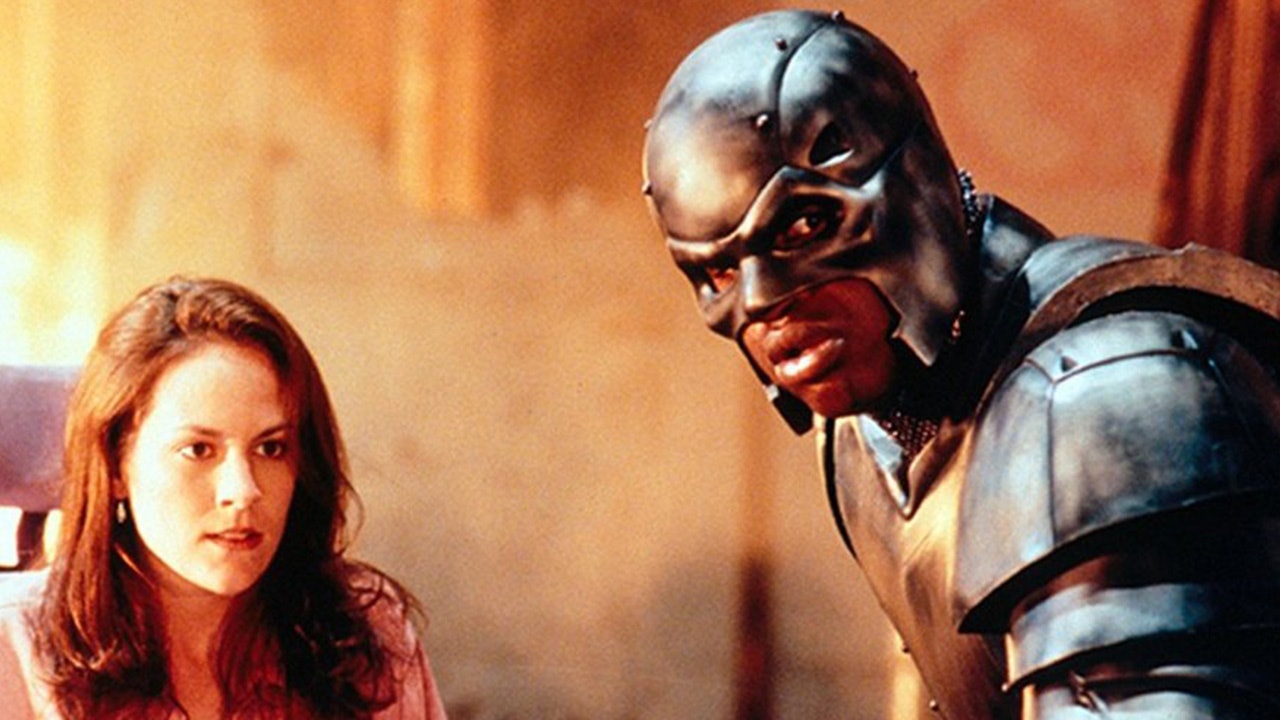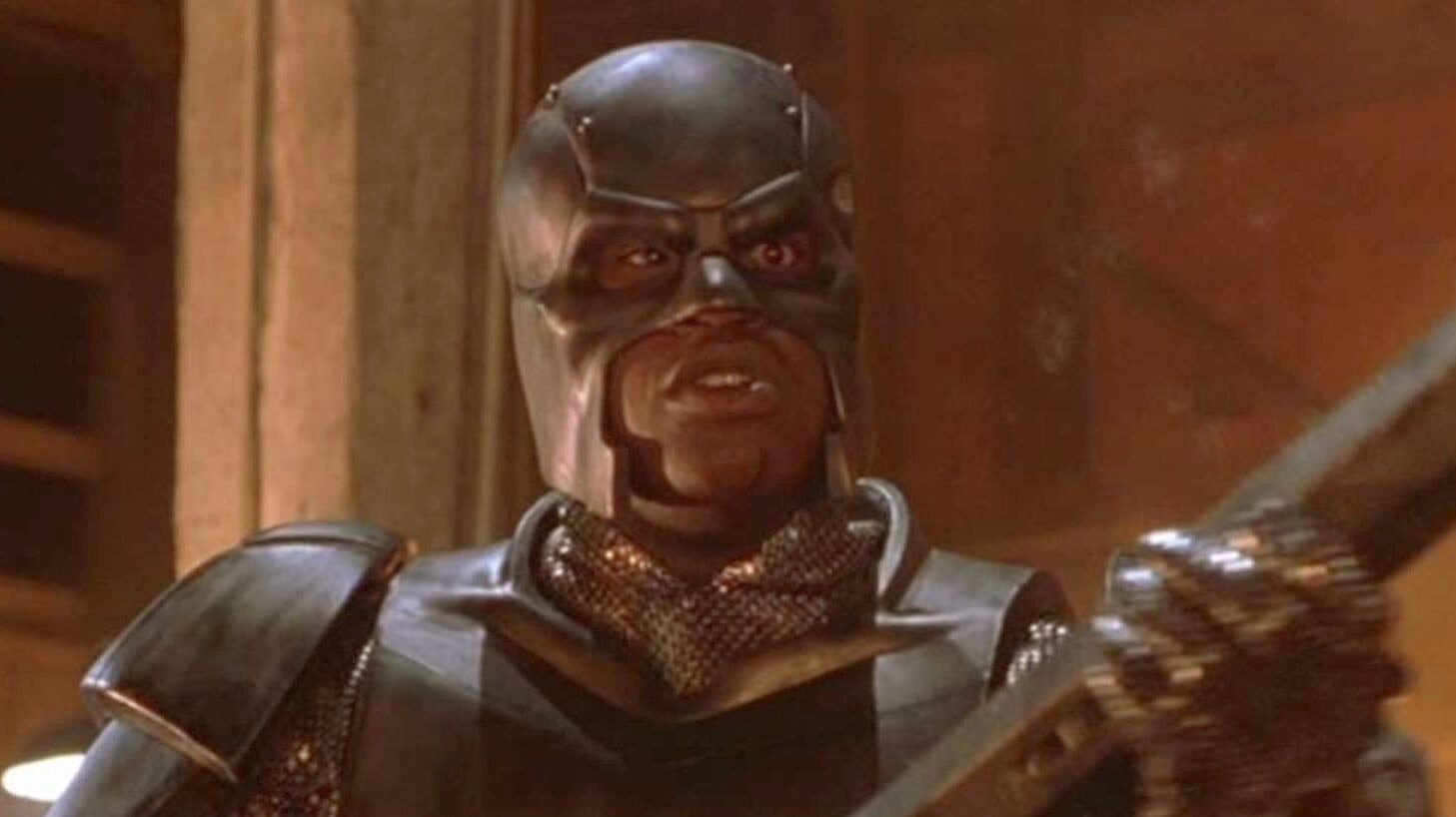
The athlete-to-actor pipeline is a risky one. While a few big names, like Dwayne Johnson, have successfully made the jump, many more have wilted. A good athlete may have a physical presence and be capable of performing under immense pressure, but those traits, while valuable, do not inherently make you a good actor. To circumvent this problem, most athletes try to launch their new career with broad comedy or bombastic action rather than intense drama, but even that’s not enough to prevent expensive flops that come across as little more than vanity projects.
It’s not a surprise, therefore, that critics and audiences in 1997 proclaimed Steel a disaster. Not only did Shaquille O’Neal’s acting fail to impress anyone, but viewers were starting to become disillusioned with superhero movies. Steel was to the ‘90s what Superman IV was to the ‘80s. The cheap suit, lousy special effects, and dreadful acting just made everyone wonder what they were doing in the theater. Already hampered by his ineptitude, Shaq hurt himself further by choosing an oversaturated genre already on a serious downturn.
The 1990s were a particularly cruel decade for comic book movies, but it was also a dark decade for comic books in general. The superhero comics of the ‘90s, both DC and Marvel, are famous for their numerous superhero deaths. While death tends to be a short-term state for most superheroes, all these demises had an emotional effect on comic readers. DC in particular set a precedent by killing Superman.
It was during The Death of Superman storyline, in 1993’s The Adventures of Superman #500, that readers were introduced to John Henry Irons. Irons, a tech genius and ballistics expert, decided to fill the gap Superman left behind and become Metropolis's new resident hero with a technologically-advanced suit of armor of his own design. Thus, Steel was born.

Steel was introduced to DC comics only four years before the film came out, which wasn’t nearly enough time for him to filter into popular consciousness. Unless you were an avid and up-to-date Superman reader you probably wouldn’t have been familiar with Steel, let alone realize that he’s part of the Superman universe.
Steel tried to circumvent this problem by being a completely standalone film with no reference to Superman whatsoever. Relative obscurity doesn’t mean a good movie can’t be made – if there’s an engaging story, decent effects, talented actors, and solid character development, a top-notch superhero flick can still be successful. That, to put it mildly, was not the case with Steel. Beyond the many obvious problems with the movie itself, there were significant issues behind the scenes.

Kenneth Johnson was brought on as the director, and based on his resume he seemed like the perfect choice. Johnson mostly worked in television, but his directing and writing credits included The Incredible Hulk, The Bionic Woman, Alien Nation, and V. He clearly had genre experience and, in a 2017 interview with Vice, Johnson said he was excited to do a movie starring a Black superhero, a rarity at the time. Johnson wanted Wesley Snipes for the role, but the studio informed him that Shaq was already signed on.
This was post-Kazaam — everyone was well aware of the scope of Shaq’s acting abilities. Johnson was disappointed, but the studio insisted that all market research pointed to success (read: More toys sold) with Shaq as the star. This was the same reasoning used when casting Arnold Schwarzenegger as Mr. Freeze in Batman & Robin, and we all know how that turned out.
Then there were the time constraints. The studio wanted Johnson to produce a script quickly because Shaq had basketball obligations. Between the low budget and the tight timeline, the film’s visuals, effects, and notorious Steel costume all suffered. Johnson wanted Steel’s outfit to look a little homemade, in the same vein as the original Iron Man suit, but instead, it just looked like the cheap rubber it was actually made from.

Despite all of this, Johnson said Warner Bros. was pleased with the final product, which sees Steel stop a soldier-turned-weapon monger who’s equipping criminals with powerful laser weapons. This implied no one actually looked at the film, because they were too busy trying to design the Steel lunchboxes that would no doubt be flying off the shelves.
Steel’s premiere also came at the worst possible time. It was released in August 1997, two months after the cinematic catastrophe that was Batman & Robin. Steel would have been poorly received even if it was the only movie released all year, but the immense backlash it received from audiences was further fueled by the displeasure people were feeling post-Batman & Robin. At this point, comic book movies seemed to only promise disappointment.
In retrospect, Steel was destined to fail. The studio was too engrossed in the marketing and merchandising, and it received neither the budget nor the time it needed. Everyone knew Shaq wasn’t an actor, Shaq knew he wasn’t an actor, and Shaq couldn’t get any acting training because he still had an active basketball career. That he forged ahead anyway is an insight into the man’s psyche.
Steel survives only as a curio, and a reminder that no matter how many issues superhero movies face today, the genre used to be in much, much worse shape. At least no one had to hear Shaq rap.







